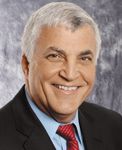Article
Should you add weight and nutrition management to your practice?
Author(s):
Weight management and nutrition counseling may offer a way to help your patients—and your practice—become healthy.

Key Points
Nearly 100 million adults in the United States are overweight and at risk for chronic disease, including diabetes, coronary artery disease, stroke, and hypertension, according to the American College of Physicians (ACP).
Like most family physicians, Joe Kepko, DO, of Bensalem, Pennsylvania, often fought a losing battle with his overweight patients in 22 years in family practice. He recounts a conversation with a female patient who had diabetes, was 45 pounds overweight, and was complaining about taking her medications and insulin. He pointed out she would be able to stop taking all of her medications and reverse her diabetes just by losing the excess weight.
But it isn't that simple.

In most cases, preventive medicine-such as weight loss and nutrition counseling services-is not covered by insurance unless it is tied to a chronic condition such as hypertension or diabetes. Moving into cash-based businesses increases physician income and supports a practice that is seeing declining revenues.

Kepko says he first looked at adding weight management services as a way to address a need with his patients, but battles with insurance companies and red tape propelled him into seeking new revenue alternatives. Over the years, his costs doubled at his family practice, and his overhead was at 43%. He scaled back his family practice and now runs three weight loss centers, reducing his overhead to 17%.
"I have no incentive to go back to insurance-based family practice," Kepko says. "Quite frankly, this was probably a [hastily made] business decision. I'm still helping patients, but in a different venue without the inclusion of the insurance company."
THE BUSINESS PLAN
When adding any services to a practice, many family physicians rely on their business acumen or an administrative person with expertise, whereas others may involve a consultant in making a decision on whether to add an ancillary service.
"At the end of the day, a practice will benefit or suffer on that ancillary business, so be careful about the advice you follow," Stream says.

Because weight loss services generally are not covered by insurance, patients are going to have to pay out-of-pocket for the service. Joseph Capko, a senior marketing and market research consultant with Capko & Company, a healthcare consulting firm in Thousand Oakes, California, says what many physicians don't fully appreciate is that patients are often reluctant to open their wallets when insurance doesn't kick in for a service.
Gray Tuttle, CHBC, a principal with Rehmann's Healthcare Management Advisors in Lansing, Michigan, says another consideration in adding weight management services, in particular, is finding a program that fits a practice clinically and philosophically. There is also the consideration of going head-to-head against commercial medical weight loss centers that pump dollars into advertising.
"Before you make a strategic decision like that, evaluate the local marketplace. Evaluate the number of competitors in the local environment against the population to assess the market for that service," Capko says.
If you have completed a thorough analysis of your area and believe your patient population could benefit, then the business plan should consider revenue, marketing, staffing, program creation, equipment, and reimbursement (if applicable). (See "Creating a business plan".)
"If the addition of nutritional counseling and weight management cover some overhead that is otherwise uncovered, it's a financial benefit then. Indirectly it creates some enhanced profits," Tuttle says.
"The 'down and dirty' calculation is to look at revenues; allocate all related overhead to that service; allocate direct costs of providing the service, counselors, and nutritionist; and, hopefully, you have a profit," he adds. "It depends on how much demand they can push into that service."
Very few ancillary services are going to be profitable from day one. Stream suggests being realistic about a practice's ability to carry the costs of an added service before it can turn a profit.





